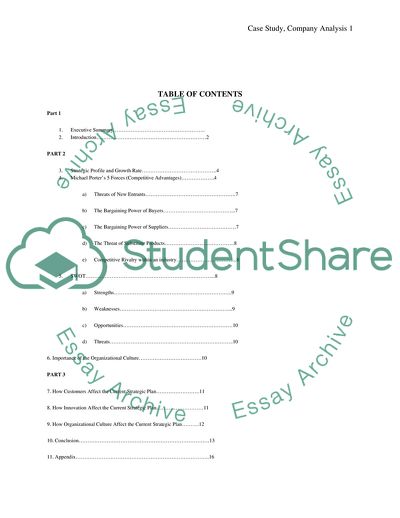Cite this document
(Detailed Strategic Evaluation of Goldman Sachs Report Example | Topics and Well Written Essays - 3000 words - 1, n.d.)
Detailed Strategic Evaluation of Goldman Sachs Report Example | Topics and Well Written Essays - 3000 words - 1. https://studentshare.org/finance-accounting/1813842-complete-a-detailed-structured-strategic-evaluation-of-an-organisation-and-consider-how-well-the-organisations-current-strategic-plans-and-commitments-address-the-identified-opportunities-threats-and-risks
Detailed Strategic Evaluation of Goldman Sachs Report Example | Topics and Well Written Essays - 3000 words - 1. https://studentshare.org/finance-accounting/1813842-complete-a-detailed-structured-strategic-evaluation-of-an-organisation-and-consider-how-well-the-organisations-current-strategic-plans-and-commitments-address-the-identified-opportunities-threats-and-risks
(Detailed Strategic Evaluation of Goldman Sachs Report Example | Topics and Well Written Essays - 3000 Words - 1)
Detailed Strategic Evaluation of Goldman Sachs Report Example | Topics and Well Written Essays - 3000 Words - 1. https://studentshare.org/finance-accounting/1813842-complete-a-detailed-structured-strategic-evaluation-of-an-organisation-and-consider-how-well-the-organisations-current-strategic-plans-and-commitments-address-the-identified-opportunities-threats-and-risks.
Detailed Strategic Evaluation of Goldman Sachs Report Example | Topics and Well Written Essays - 3000 Words - 1. https://studentshare.org/finance-accounting/1813842-complete-a-detailed-structured-strategic-evaluation-of-an-organisation-and-consider-how-well-the-organisations-current-strategic-plans-and-commitments-address-the-identified-opportunities-threats-and-risks.
“Detailed Strategic Evaluation of Goldman Sachs Report Example | Topics and Well Written Essays - 3000 Words - 1”. https://studentshare.org/finance-accounting/1813842-complete-a-detailed-structured-strategic-evaluation-of-an-organisation-and-consider-how-well-the-organisations-current-strategic-plans-and-commitments-address-the-identified-opportunities-threats-and-risks.


